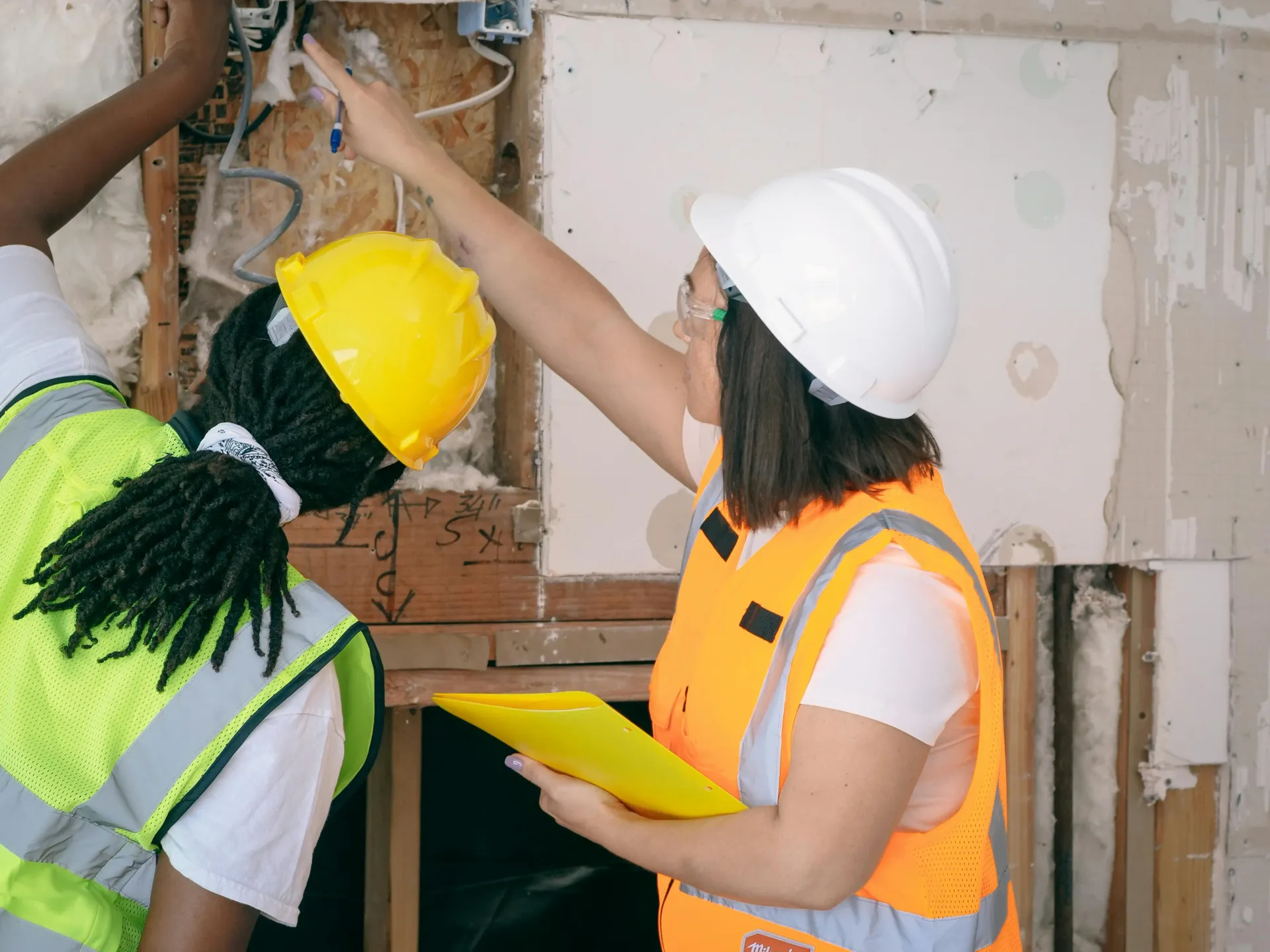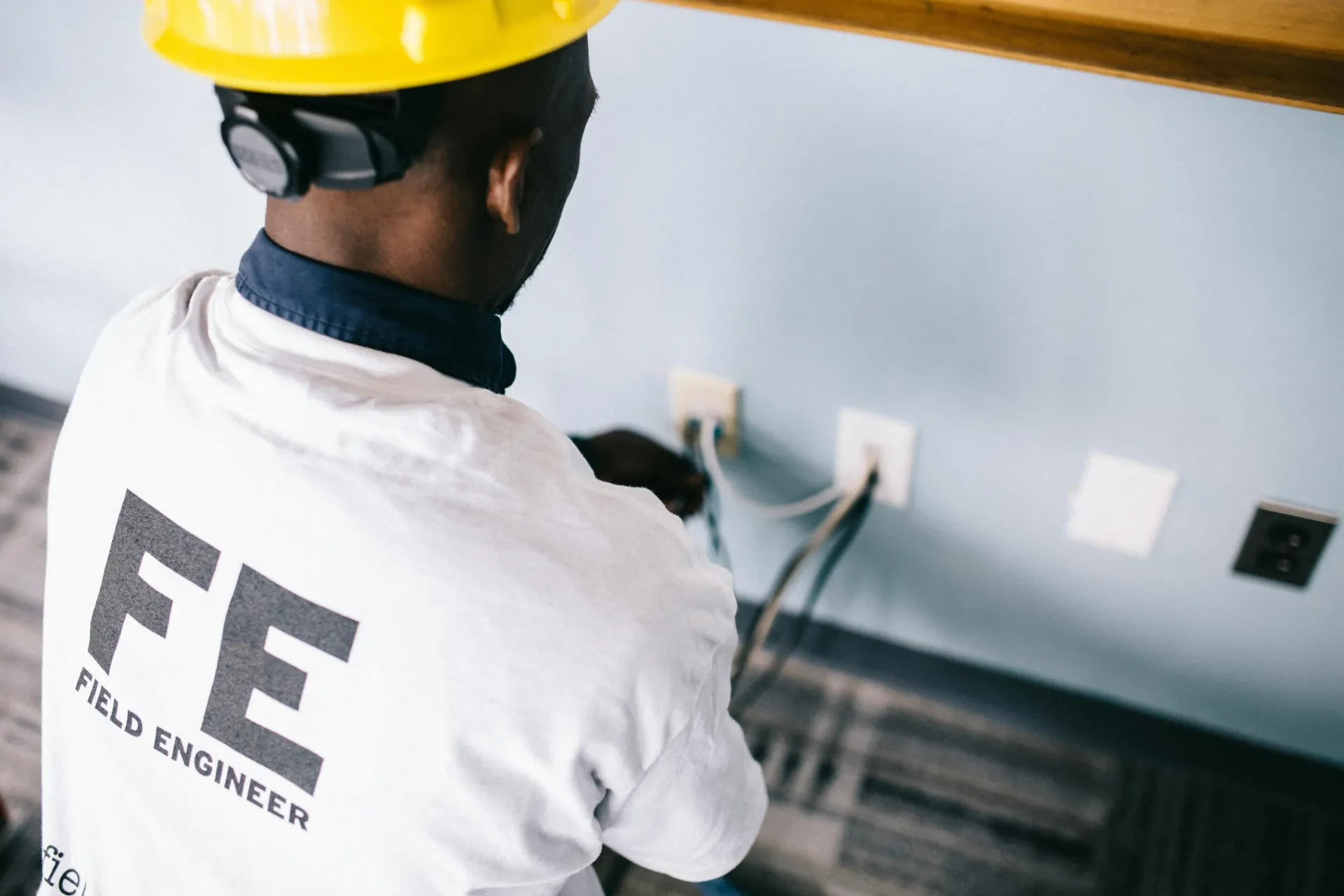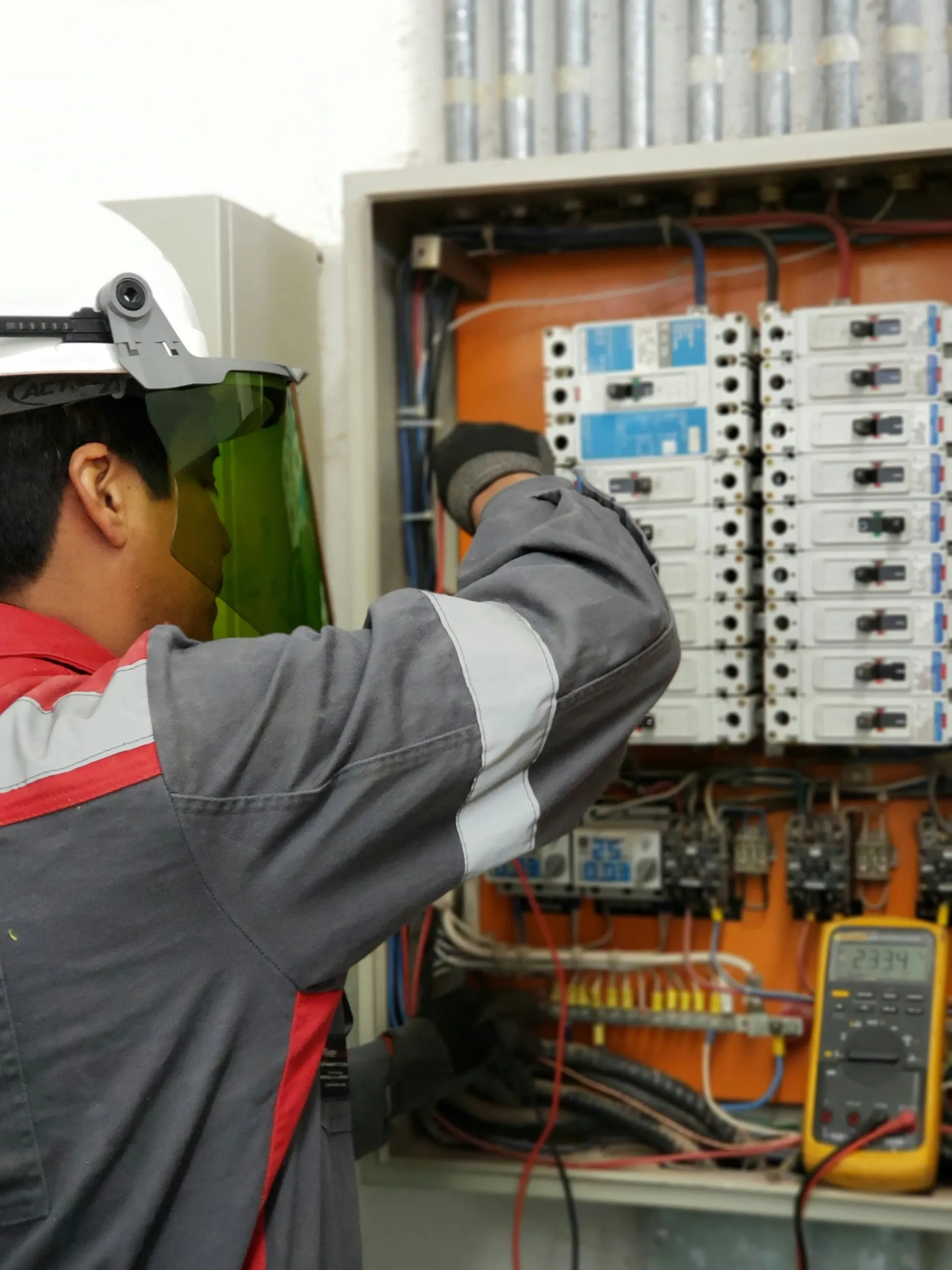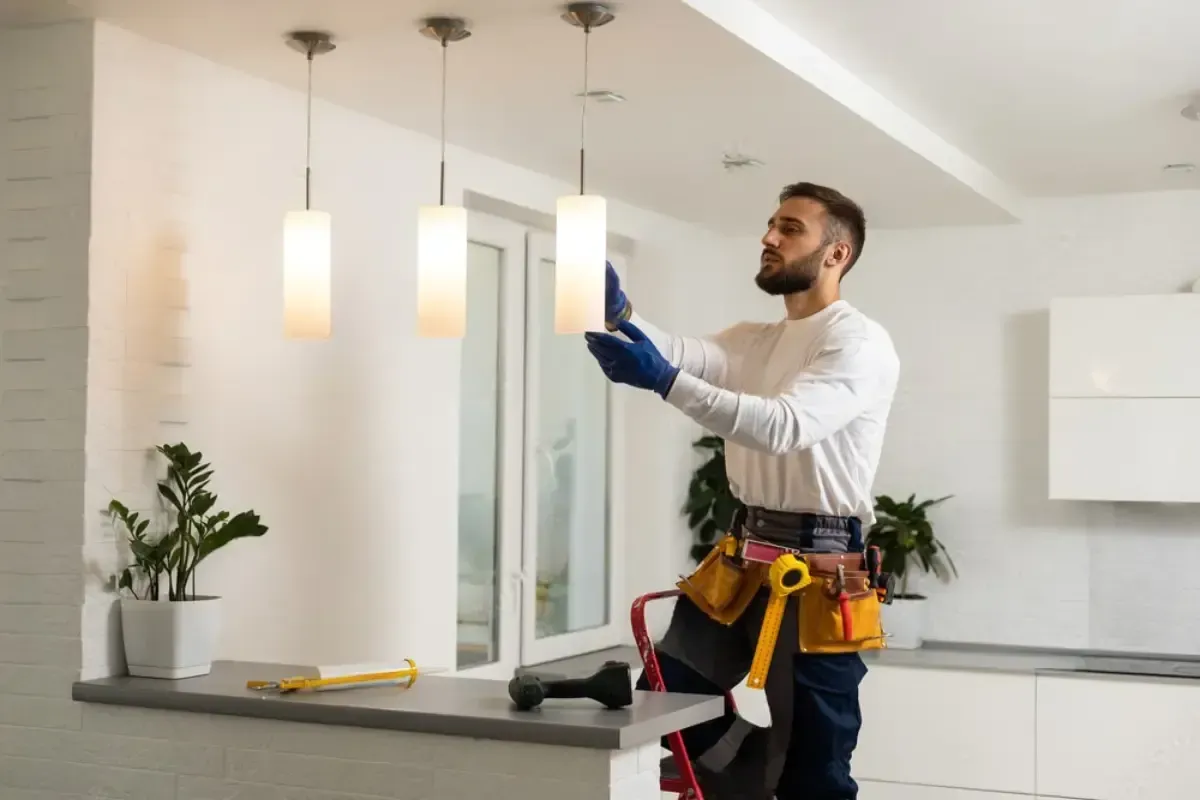Voltage Surges: The Silent Killer of Electronics
In our hyper-connected digital age, safeguarding electronics isn't a luxury—it’s a necessity. Nearly every home, office, or industrial site relies on devices that are vulnerable to a surprisingly stealthy threat: voltage surges. These surges, often invisible and intermittent, are responsible for billions in property damage every year. Despite their frequency and destructive potential, many people remain unaware of their presence—until it's too late.
Voltage surges occur suddenly and without warning, sometimes for mere milliseconds. Yet within that blink of time, they can burn out power supplies, corrupt data, degrade sensitive components, and render expensive electronics useless. This is why they've been labeled the "silent killer of electronics."
The insidious nature of voltage surges lies in their unpredictability and variety. They can come from inside your home, triggered by something as innocuous as a fridge turning on. Or they can originate outside, from your local utility grid or even lightning strikes miles away. No matter the source, their impact is often the same: silent destruction.
But here's the good news—you’re not defenseless. With the right knowledge and protection strategies, you can defend your home or business against this menace. This article is your comprehensive guide to understanding, preventing, and outsmarting voltage surges.

Voltage Surges
So, what exactly is a voltage surge? Technically, it’s an unexpected and temporary increase in voltage within an electrical circuit. While standard voltage in most homes is around 120 volts in the U.S., a surge can spike that number up to thousands of volts for a split second. These short-lived bursts can fry circuit boards, corrupt data, or cause erratic behavior in sensitive electronics.
Interestingly, voltage surges often go unnoticed. Many people only become aware of them after a device mysteriously stops working—or worse, catches fire.
Understanding the Nature of Voltage Surges
A voltage surge, also known as a transient voltage, is a sudden increase in electrical voltage above the designated flow level. Typically, residential electrical systems operate at around 120 volts (in the US). A surge might cause this to rise to 1,000 volts or even more for just a few microseconds.
These spikes can be caused by several factors—some benign, others more menacing. A common cause is the switching of high-power electrical appliances. When devices like air conditioners or industrial motors start or stop, they can cause sudden changes in electrical current, sending shockwaves through the wiring.
Another major cause is lightning. A single lightning strike can induce voltage spikes exceeding 100,000 volts. Even if the lightning doesn’t hit your building directly, it can strike nearby power lines or transformers, causing a dangerous pulse of energy to travel along your utility wires straight into your devices.
There’s also the issue of power grid fluctuations. Utility companies often switch power routes or bring generators online during peak loads, which can lead to temporary surges. These fluctuations might not be noticeable in terms of lighting or appliance function—but they are silently chipping away at your device longevity.
Types of Voltage Surges
Not all surges are created equal. Understanding their origin can help you choose the right protection strategy.
Internal Surges:
Surprisingly, up to
80% of all surges originate within a building. These are caused by devices turning on and off, especially large motor-driven appliances like refrigerators, HVAC units, or even vacuums. These small surges usually don’t cause immediate damage but wear down components over time—a phenomenon known as
electronic rust.
External Surges:
External surges tend to be more dramatic. Lightning strikes, downed power lines, utility grid switching, and transformer faults can send massive amounts of energy flowing through your wiring. These types of surges can instantly destroy sensitive equipment—no warning, no mercy.
Both types of surges are dangerous. While external surges are more catastrophic, internal surges are more common and persistent. Effective protection means guarding against both.
Common Sources of Voltage Surges
Let’s take a closer look at some of the most prevalent culprits behind voltage surges:
- Lightning Strikes: These are rare but massively destructive. A single bolt can send tens of thousands of volts coursing through your electrical system.
- Utility Grid Switching: When your power company adjusts loads, brings new sources online, or changes transmission paths, it can create momentary surges.
- Downed Power Lines: Storms, accidents, or trees can bring lines down. When power is restored, it can flood your system with unexpected energy.
- Faulty Wiring: Aging or poorly installed wiring can create irregular electrical flow. This inconsistency is fertile ground for surges.
- High-Energy Appliances: Motors, compressors, and heating elements can cause mini-surges every time they cycle on and off.
- Tripped Breakers and Circuit Faults: When circuits reset or short, the sudden power redistribution can create spikes.
Understanding the source is the first step toward effective prevention. Once you know where the danger is coming from, you can build defenses to block or absorb it.
Impact of Voltage Surges on Electronics
Here’s the kicker—most voltage surges don’t immediately fry your electronics. Instead, they inflict cumulative damage, degrading components little by little until a device fails.
Think of it like this: imagine if someone dripped acid onto a metal pipe every day. One drop wouldn’t destroy it. Even a hundred might not. But over time, the pipe would weaken, crack, and eventually burst. That’s exactly how voltage surges operate.
Here’s how surges silently kill electronics:
- Overheating Microchips: Repeated surges cause excessive heat inside processors, leading to slow death of the CPU or GPU.
- Corrupt Memory: Sudden spikes can disrupt the data stored in RAM, SSDs, or hard drives, causing system crashes or data loss.
- Circuit Trace Damage: The thin copper lines etched into circuit boards can be literally vaporized by a strong surge.
- Shortened Lifespan: Devices may continue to work, but their lifespans are slashed dramatically—often by 30–50%.
- Intermittent Failures: The worst part is the unpredictability. Devices may work one day and fail the next without clear cause.
Ultimately, voltage surges don’t just destroy—they rob you of reliability and peace of mind.
Why They’re Called the 'Silent Killer'
Unlike dramatic electrical fires or visible lightning strikes, voltage surges rarely leave visible signs. This is precisely why they’ve earned the ominous nickname—the silent killer.
You won't hear them. You won't see sparks flying. Most of the time, there's no smoke, no burning smell. Your laptop doesn't immediately go dark. Your smart TV doesn't explode. Instead, things start behaving a little… weird.
One day, your router begins rebooting randomly. The next week, your refrigerator’s digital display flickers, and a few months later, the power supply on your gaming console gives out. Coincidence? Not likely.
These seemingly isolated issues are often the result of incremental damage caused by small, unnoticed voltage spikes. This stealth mode of destruction is what makes voltage surges so dangerous—because you don’t notice them until the damage is already done.
Just like water slowly rots the foundation of a home, surges erode the digital bones of our devices. By the time you realize what’s happening, it’s too late.
Signs Your Electronics Are Suffering
Spotting the signs of surge damage early can save your devices and your wallet. Here are the red flags you should never ignore:
- Device is unusually hot: Surges cause components to overheat. If your laptop or charger is running hotter than normal, take note.
- Frequent reboots or software crashes: A computer that restarts often or a smart home hub that drops connection could be suffering internal damage.
- Display anomalies: Flickering screens, dead pixels, or ghosting are common signs in TVs and monitors.
- Buzzing or humming sounds: Surges may damage capacitors, which can start to emit a faint buzzing sound.
- Decreased performance: Electronics may still function but at reduced efficiency—longer load times, inconsistent speeds, or poor responsiveness.
- Mysterious burnout: If a power supply dies for no reason or a circuit board looks scorched, it’s likely surge damage.
If you notice any of these issues across multiple devices, it’s a clear sign that your home or office may be experiencing frequent voltage fluctuations.
Household Devices Most at Risk
Certain devices in your home are especially vulnerable due to their complexity and constant connection to power:
- Televisions: Especially smart TVs with built-in Wi-Fi and HDMI ports—prime targets.
- Gaming Consoles and PCs: These contain delicate processors, RAM, SSDs, and motherboards.
- Refrigerators and Ovens: Modern appliances now come with digital controls and smart features, making them vulnerable.
- Wi-Fi Routers and Modems: These are always on and always sensitive to even minor spikes.
- Microwaves and Washing Machines: Contain circuit boards that are easily damaged by voltage irregularities.
- HVAC Systems: Air conditioning units often suffer from internal or external surge-related failures.
- Chargers and Adapters: They might be the canary in the coal mine, often burning out first.
Each of these devices represents a significant investment, both financially and functionally. Losing any one of them unexpectedly isn’t just frustrating—it can be costly.
Business Infrastructure Risks
For businesses, the stakes are even higher.
Voltage surges can cause catastrophic losses, from shutting down entire networks to corrupting vital data. Just imagine an e-commerce company with its servers fried during a thunderstorm, or a restaurant unable to process payments because its POS system crashed.
Here are the key areas where voltage surges pose major threats:
- Servers and Network Equipment: Damage can result in extended downtime, data loss, and revenue disruption.
- Security Systems: Cameras, alarms, and access control systems are frequently online and can be crippled by spikes.
- Manufacturing Equipment: Industrial machines often run on sensitive controls and automation systems that cannot withstand high voltages.
- Medical Devices: In healthcare, even brief downtime or inaccuracies can be life-threatening.
- Retail POS Systems: Outages lead to revenue loss and poor customer experiences.
For business owners, surge protection is not optional—it’s essential risk management. Investing in industrial-grade protection solutions often costs a fraction of what one incident could cost in downtime or repairs.
The Role of Grounding in Protection
One of the most fundamental lines of defense against voltage surges is proper electrical grounding.
In simple terms, grounding gives excess electrical energy a safe path to follow—usually into the earth. When a surge hits, grounding diverts that dangerous current away from your devices.
Here’s why grounding is crucial:
- Redirects surges: Without grounding, excess voltage has nowhere to go but into your appliances.
- Prevents electric shock: A grounded system is safer for people, preventing injury from stray currents.
- Stabilizes voltage: Grounding helps balance the flow of electricity, ensuring smoother operation of equipment.
- Reduces fire risk: Improper grounding can allow sparks or arcing, which may ignite flammable materials.
To check if your home is properly grounded, you may need a professional electrical inspection. A licensed electrician can verify grounding integrity and recommend upgrades like grounding rods or bonding improvements.
If you're unsure, now is a good time to Contact a certified professional who can inspect and correct your grounding system for optimal protection.
Power Strips vs. Surge Protectors
Let’s clear up one of the most common—and costly—misunderstandings: power strips are not surge protectors.
At a glance, they might look the same. Both offer multiple outlets, both plug into a wall socket, and both seem to help organize your cable mess. But that’s where the similarities end.
Here’s the critical distinction:
- Power Strips: These are simply multi-outlet extension cords. They offer no protection from surges. Their only role is to expand the number of devices you can plug in.
- Surge Protectors (Suppressors): These come with internal components (like MOVs—metal oxide varistors) that absorb or divert excess voltage, protecting whatever’s plugged into them.
Using a power strip for your computer or TV thinking it’s a surge protector is like locking your front door but leaving the windows wide open.
What to Look For in a Surge Protector:
- UL 1449 Rating: Certified to handle surges.
- Clamping Voltage: Lower is better (330V is ideal).
- Joule Rating: Indicates energy absorption capacity (the higher, the better).
- Indicator Light: Shows whether the protection is active.
So, before you plug your expensive devices into any strip, make sure it clearly states “Surge Protector” on the label and includes these technical specs.
How Surge Protectors Work
Surge protectors function like pressure relief valves. When voltage remains within safe levels, electricity flows unimpeded to your devices. But when a surge occurs, the surge protector diverts or absorbs the excess voltage, preventing it from frying your electronics.
Here’s a simple breakdown of what happens inside:
- MOV (Metal Oxide Varistor): The core component. It sits between the hot and ground lines, and its resistance changes based on voltage levels.
- At normal voltage, it’s non-conductive.
- When voltage spikes, it conducts excess current away.
- Gas Discharge Arrestors and Diodes: Used in higher-end protectors, these add layers of suppression.
- Thermal Fuses: Cut off power if the MOV overheats or fails.
Some advanced models also come with EMI/RFI filtering, which reduces noise and interference—great for audio/video setups.
Surge protectors don’t last forever. They sacrifice themselves to save your gear. Once the internal components are worn out (from repeated surges), they stop protecting even though power may still flow. That’s why having an indicator light is vital—and why regular replacement is a smart move.
Understanding Joule Rating
If you’ve ever read the packaging on a surge protector, you’ve likely seen a joule rating. But what does it actually mean?
A joule is a unit of energy. When applied to surge protectors, the joule rating tells you how much surge energy the device can absorb over its lifetime.
What the Joule Rating Tells You:
- Higher is Better: A 1000-joule surge protector is more robust than a 300-joule one.
- Not a One-Time Value: The joule rating is cumulative. Multiple small surges add up and slowly deplete this capacity.
- No Warning When It’s Used Up: Unless your protector has an indicator light, you won’t know when it’s no longer effective.
Recommended Ratings:
- Basic Electronics (Lamps, Clocks): 200–400 joules
- Office Equipment (Printers, Routers): 600–1000 joules
- High-End Electronics (TVs, PCs): 2000+ joules
- Gaming and Studio Gear: 3000+ with isolated EMI/RFI filtering
Ultimately, the joule rating is a silent indicator of how well your surge protector can perform over time. Don’t skimp here—it’s like choosing the right armor in a battlefield.
Clamping Voltage Explained
The clamping voltage of a surge protector is the point at which it "activates" and starts diverting excess electricity. The lower the clamping voltage, the sooner the device kicks in to protect your electronics.
Key Points:
- 330V: Excellent protection; ideal for sensitive electronics.
- 400V–500V: Good for standard home devices.
- >600V: Suitable for large appliances or commercial setups.
While a higher clamping voltage might protect against major surges, it also means minor surges could pass through and damage sensitive gear.
That’s why low clamping voltage combined with high joule rating is the golden combination for surge protection.
The right balance ensures your devices are shielded from even mild voltage fluctuations that would otherwise accumulate over time.
Whole-House Surge Protectors
Now, let’s take protection to the next level.
Whole-house surge protectors are installed at your electrical panel, acting as the first line of defense against external surges. They intercept surges before they reach any device in your home.
Why You Might Need One:
- You live in a storm-prone area.
- You use expensive home automation systems or smart devices.
- You have sensitive electronics on multiple circuits.
- You want to protect HVAC, well pumps, and major appliances—not just plug-in devices.
Benefits:
- Comprehensive Defense: Guards everything connected to your panel.
- Long-Term Value: Saves you from frequent device replacements.
- Reduces Wear: By absorbing daily mini-surges from grid switching or large appliances.
These systems should be installed by a licensed electrician, such as those offering Electrical Service in your area.
Combined with point-of-use surge protectors, whole-house systems provide layered protection, ensuring even if one barrier is breached, others stand ready.
Voltage Surge and Smart Homes
With the rise of smart homes, surge protection is no longer just about saving your TV. It’s about safeguarding your entire digital lifestyle.
Smart homes are built on interconnectivity—doorbells with HD cameras, smart speakers, thermostats, lighting systems, even voice-activated ovens. Each of these devices is powered by microprocessors and remains connected to your Wi-Fi 24/7.
Why Smart Homes Are Especially Vulnerable:
- Constant Connectivity: Always online means always exposed.
- Delicate Hardware: Smart tech relies on miniaturized components that are more sensitive to voltage spikes.
- Interlinked Systems: A surge in one device (e.g., smart plug) can ripple through others on the same network.
- Cloud Reliance: Corrupting just one smart hub can cut off control to an entire ecosystem.
Smart Home Surge Protection Strategy:
- Use high-quality surge protectors at every point of use.
- Install a whole-house surge suppressor to catch external spikes.
- Integrate uninterruptible power supplies (UPS) for smart hubs, routers, and NAS units.
- Avoid cheap smart plugs—they often lack protection circuits.
With a growing number of devices plugged in and communicating, a single surge can disrupt your home’s functionality. Protecting your investment now is smarter than replacing it later.
Surge Protection for Data Centers
Data centers are the beating heart of businesses today. Whether it's a server room for a mid-size business or a full-blown cloud infrastructure, a single power surge can cause irreversible data loss and equipment failures worth thousands—or even millions.
Risks in a Data Environment:
- Hard Drive Failures: Surges can cause head crashes or file corruption.
- Memory Corruption: RAM is highly sensitive to transient voltage.
- Power Supply Burnouts: A sudden spike can take out multiple units at once.
- Router and Switch Failures: Can shut down entire networks for hours.
Solutions for Data Center Surge Protection:
- Rack-Mount Surge Protectors: Specifically designed to handle high throughput and data lines.
- Shielded Data Cables: Helps protect from surge traveling through Ethernet and coaxial cables.
- UPS Systems with AVR (Automatic Voltage Regulation): Keeps power steady while also providing battery backup.
- Dedicated Grounding Systems: Ensures safe current flow paths during voltage irregularities.
Data integrity and uptime are critical. Surge protection here isn’t optional—it’s mission-critical.
The Cost of Ignoring Surge Protection
It’s easy to brush off surge protection as an unnecessary expense—until the day a surge hits and you tally up the damage.
Real-World Examples:
- Home Office Hit: A $1,500 desktop, $200 monitor, $300 printer—all fried during a spring thunderstorm.
- HVAC Meltdown: An unprotected home in Florida sees a $4,000 bill after lightning zaps their central air unit.
- Small Business Wipeout: A power surge cripples a salon’s digital POS system, forcing manual payments for two days and a $2,000 replacement cost.
Hidden Costs:
- Lost Productivity: Time spent reinstalling, recovering data, or replacing gear.
- Downtime: For businesses, every second offline is a lost customer or sale.
- Data Loss: Priceless files, client databases, or project work gone in a blink.
- Reputation Damage: If your business crashes during customer interactions, trust takes a hit.
Compare these costs to a $200 whole-house suppressor or a $50 surge-protecting power strip, and the math becomes obvious. Surge protection is an investment, not an expense.
DIY Surge Protection Tips
Not everything needs an electrician. Here are practical steps homeowners and small business owners can take right now to beef up their defense against voltage surges:
Simple Actions You Can Take:
- Install Plug-in Surge Protectors: Especially on TVs, computers, routers, and smart hubs.
- Use UPS Systems: Protects sensitive electronics and gives time to shut down properly during outages.
- Unplug During Storms: The oldest, most foolproof trick in the book.
- Isolate Major Appliances: Avoid plugging heavy-duty machines into the same outlet as sensitive electronics.
- Label and Organize Outlets: Know which circuits power what so you can spot overload issues quickly.
- Inspect for Overloaded Circuits: Too many devices plugged into one strip or outlet is a recipe for disaster.
- Replace Old Surge Protectors: Especially if they’re over five years old or lack indicator lights.
DIY steps are your first line of defense, but for whole-house or business-grade protection, you’ll want a professional’s expertise.
Speaking of which…
👉 Contact a Certified Electrician Today for a full electrical safety inspection.
When to Call a Professional
DIY solutions are fantastic for basic protection—but there are times when a licensed electrician is non-negotiable. Voltage surges don’t just threaten your gadgets—they’re often symptoms of deeper, more dangerous problems in your home’s electrical system.
Situations That Demand Expert Help:
- Flickering Lights: Especially when large appliances start up—could indicate voltage irregularities or grounding issues.
- Old Wiring or Fuse Boxes: These systems can’t handle modern electrical demands, let alone suppress surges.
- Unexplained Breaker Trips: Frequent resets are often due to surges or faulty connections.
- After a Lightning Strike Nearby: Even if nothing seems damaged, it’s wise to get an inspection.
- Expanding Smart Home Setups: Integrating high-end smart technology requires clean, steady voltage.
What a Professional Can Do:
- Install Whole-House Surge Protectors: The best first line of defense against external surges.
- Inspect Grounding Systems: Essential for directing excess energy safely into the earth.
- Upgrade Your Panel: Surge-safe breaker panels and AFCI/GFCI circuits enhance protection.
- Design Layered Protection Plans: Customized for your home's or business's unique load and risk level.
Think of an electrician as a surge consultant. Don’t wait for damage—get proactive. If you're unsure where to start, get help now by scheduling an Electrical Service visit.
Choosing the Right Surge Protection Setup
Every home and business is different, and so is the ideal surge protection solution. Choosing the right setup depends on device usage, location, and exposure risk.
Step-by-Step Setup Plan:
- Audit Your Equipment
List all sensitive electronics, appliances, servers, smart hubs, routers, etc. - Determine Exposure
Are you in a lightning-prone area? Do you frequently experience brownouts or blackouts? - Install Whole-House Protection
Start at the panel. A type 2 surge protective device (SPD) stops external threats. - Layer with Point-of-Use Surge Protectors
Use surge strips and UPS systems for TVs, computers, and smart home gear. - Don’t Forget Communication Lines
Surge protectors for coaxial, phone, and Ethernet lines stop surges traveling through data cables. - Label and Replace
Regularly replace surge devices and clearly label circuits for easier tracking. - Get a Professional Inspection
They can test grounding, recommend high-joule devices, and ensure panel compatibility.
Protection Plan Examples:
Use Case Essential Devices Recommendations
Home Office PC, printer, router, monitor Surge strip + UPS + panel SPD
Smart Home Smart hubs, thermostats, smart TVs Whole-house protector + isolated surge units
Business Setup POS, servers, switches, phone systems Rack-mount SPD + UPS + dedicated grounding
Studio/AV Gear Mixers, amps, speakers, computers Line conditioner + surge filter + UPS
The right setup doesn’t have to be complex—but it does need to be strategic.
Voltage Regulators vs Surge Protectors
Though often confused, voltage regulators and surge protectors serve very different purposes. They’re both critical in power management—but they’re not interchangeable.
What is a Voltage Regulator?
A voltage regulator stabilizes the power supply to a safe and consistent voltage level. It's designed to:
- Protect against brownouts (low voltage).
- Prevent slow voltage fluctuations from damaging sensitive gear.
- Ensure consistent power to critical devices like medical equipment or high-end AV systems.
What is a Surge Protector?
A surge protector guards against sudden, high-voltage spikes. Its job is to:
- Absorb or redirect excess voltage away from connected devices.
- Respond instantly to sudden events like lightning strikes or grid switching.
Do You Need Both?
In many cases—yes.
- Use a voltage regulator where consistent voltage is crucial (e.g., gaming rigs, music studios, hospitals).
- Use a surge protector everywhere, including devices connected to a voltage regulator.
- Some devices combine both functions, but be sure to check specs.
Surge protectors defend against short-term disasters. Voltage regulators provide long-term performance stability. Together? They’re an unbeatable team.
Battery Backup Systems and Surge Defense
Power outages and surges often go hand-in-hand. When the power blinks off, then comes rushing back on, that moment of return can deliver a sharp spike of electricity. That’s why battery backup systems (UPS units) serve double duty.
Benefits of UPS Systems:
- Surge Protection: Most include built-in surge suppression.
- Voltage Regulation: Some models include automatic voltage regulation (AVR).
- Battery Power: Gives you several minutes—or hours—of power after an outage.
- Safe Shutdown: Lets you save work and turn off equipment without data loss.
Ideal for:
- Computers and Servers: Prevents file corruption and hard drive damage.
- Medical Devices: Ensures continued function during emergencies.
- Security Systems: Keeps surveillance and alarms running when power fails.
- Gaming/Streaming Setups: Saves your progress and prevents bricked consoles.
Choosing a UPS:
Features:
Joule Rating At least 600 joules for solid protection
Output Capacity (VA) Enough wattage for your setup
Battery Runtime Long enough to shut down or switch over
AVR Built-in line conditioning
A UPS is more than a backup—it’s a voltage guardian. And if you work remotely, stream content, or run a business, it’s a must-have.
Best Practices for Surge Protection
Surge protection isn’t a one-and-done event—it’s an ongoing maintenance and safety practice. Following these tips will help ensure your investment lasts and your electronics stay safe.
Do:
- ✔ Layer your defense: Combine whole-house units with surge strips.
- ✔ Use high-quality protectors: UL-listed, with low clamping voltage and high joule rating.
- ✔ Replace units regularly: Especially after major storms or if the indicator light is off.
- ✔ Secure all entry points: Including coaxial, telephone, and Ethernet cables.
- ✔ Test your grounding annually: Hire a pro to ensure proper dissipation paths.
- ✔ Install UPS on critical devices: Especially for workstations and servers.
Don’t:
- ✘ Rely solely on power strips.
- ✘ Ignore minor surges—every hit counts.
- ✘ Stack multiple surge protectors.
- ✘ Plug surge protectors into extension cords.
- ✘ Wait for damage to take action.
By applying these habits, you’re not just protecting electronics—you’re preserving productivity, entertainment, and peace of mind.
Latest Technologies in Surge Protection
The surge protection industry isn’t static. As our reliance on electronics grows, manufacturers continue to develop smarter, more responsive, and longer-lasting solutions to keep our gear safe.
Innovations That Are Changing the Game:
- Smart Surge Protectors
These devices integrate with your smartphone or home automation system. They monitor voltage levels in real time, notify you of surges, and allow you to remotely reset or shut off devices. - Self-Healing MOVs
Traditional MOVs degrade with each hit. Self-healing MOVs recover after minor surges, extending the life of the protector. - Hybrid SPD Systems
Combine metal oxide varistors, gas discharge tubes, and transient voltage suppression diodes to cover a broader range of threats, from high-energy lightning strikes to micro-surges. - Remote Diagnostic Alerts
Used in commercial systems, these alerts notify facilities teams of worn or failed protection components—before disaster strikes. - Network Line Protection
Devices now include ports for Ethernet, coaxial, and even USB lines, helping to protect connected devices from data-line surges, which are increasingly common. - Modular Whole-House Units
These plug into electrical panels like circuit breakers and are easy to replace, making maintenance simpler and safer.
Adopting these technologies ensures you’re protected not just against today’s threats—but also tomorrow’s.
Surge Protection Maintenance Tips
Even the best surge protector becomes useless if it's neglected. Proper maintenance is critical to keeping your defense reliable.
Essential Maintenance Habits:
- Inspect Indicator Lights Weekly
If your surge protector’s light is off, it’s not protecting—period. - Test UPS Batteries Monthly
Most UPS systems include a self-test button. Use it. Replace batteries every 2–4 years. - Check Joule Ratings Annually
If you’ve experienced major storms or power outages, consider retiring protectors nearing their end-of-life. - Look for Physical Damage
Discoloration, cracks, melting, or buzzing sounds? Replace the unit immediately. - Label Power Zones
Keep a log of which protectors are tied to which devices. This makes monitoring and replacing much easier. - Avoid Daisy-Chaining
Never plug one surge protector into another. It doesn’t double protection—it increases risk. - Professional Inspection
Once a year, have a licensed electrician inspect your home’s grounding and panel setup.
Surge protectors are silent guardians—until they aren’t. Treat them like fire extinguishers: always present, rarely used, but vital when needed.
Voltage Surges
Let’s circle back to the heart of this guide: voltage surges themselves.
Voltage surges are brief, unpredictable spikes in electrical power. Though often lasting less than a millisecond, they carry immense destructive power capable of frying your electronics in a flash—or wearing them out silently over time.
Key Takeaways:
- They occur more often than you think—daily in some homes.
- Internal surges from your own appliances are far more common than external lightning strikes.
- No device is immune—from your $20 phone charger to your $5,000 OLED TV.
- Surge protection isn’t just a plug-in accessory—it’s a strategic necessity for every modern home or business.
You wouldn’t leave your doors unlocked in a crime-heavy neighborhood. So why leave your electronics unprotected in a surge-prone world?
FAQs
Can a surge protector go bad without warning?
Yes. Some surge protectors continue delivering power even after their protection circuit is spent. That’s why indicator lights are important.
Is surge protection needed if I have a UPS?
Yes. Many UPS units have built-in surge protection, but it’s often limited. Combining a dedicated surge protector with a UPS offers superior protection.
Do I need surge protection for LED lights or smart bulbs?
Absolutely. LED drivers and smart circuits are just as vulnerable to surges, and their failure can be sudden and total.
How long do surge protectors last?
Typically 3–5 years under normal conditions. High-exposure areas or repeated surges shorten that lifespan significantly.
Can I plug a surge protector into another surge protector?
No. This is known as “daisy chaining” and it can cause dangerous overloads.
Is whole-house surge protection worth it?
Yes. It offers the first line of defense and is especially effective when paired with plug-in units across the home.
Conclusion
Voltage surges may be invisible, but their consequences are painfully tangible. They’re silent, sudden, and incredibly destructive, targeting the core of your digital life—whether at home or at work. Fortunately, you’re not powerless.
With the right mix of knowledge, hardware, and professional guidance, you can build a surge protection strategy that doesn’t just react—but proactively shields your assets. From whole-house SPDs to smart surge strips, from grounding checks to regular maintenance—this is how you future-proof your electronics and your peace of mind.
👉 Take action today. Schedule an Electrical Service visit or reach out through the Contact page to get expert advice tailored to your setup.
Links:










